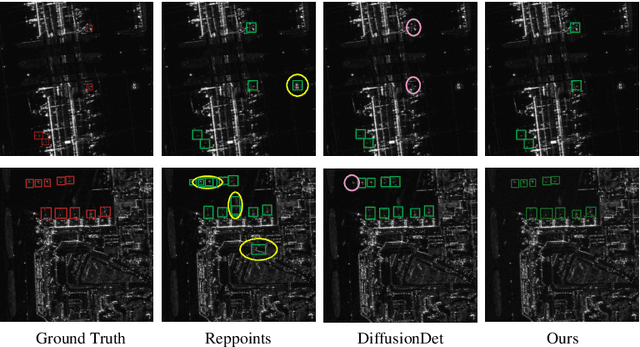Zhou Jie
MobileHolo: A Lightweight Complex-Valued Deformable CNN for High-Quality Computer-Generated Hologram
Jun 17, 2025Abstract:Holographic displays have significant potential in virtual reality and augmented reality owing to their ability to provide all the depth cues. Deep learning-based methods play an important role in computer-generated holograms (CGH). During the diffraction process, each pixel exerts an influence on the reconstructed image. However, previous works face challenges in capturing sufficient information to accurately model this process, primarily due to the inadequacy of their effective receptive field (ERF). Here, we designed complex-valued deformable convolution for integration into network, enabling dynamic adjustment of the convolution kernel's shape to increase flexibility of ERF for better feature extraction. This approach allows us to utilize a single model while achieving state-of-the-art performance in both simulated and optical experiment reconstructions, surpassing existing open-source models. Specifically, our method has a peak signal-to-noise ratio that is 2.04 dB, 5.31 dB, and 9.71 dB higher than that of CCNN-CGH, HoloNet, and Holo-encoder, respectively, when the resolution is 1920$\times$1072. The number of parameters of our model is only about one-eighth of that of CCNN-CGH.
ReverB-SNN: Reversing Bit of the Weight and Activation for Spiking Neural Networks
Jun 09, 2025Abstract:The Spiking Neural Network (SNN), a biologically inspired neural network infrastructure, has garnered significant attention recently. SNNs utilize binary spike activations for efficient information transmission, replacing multiplications with additions, thereby enhancing energy efficiency. However, binary spike activation maps often fail to capture sufficient data information, resulting in reduced accuracy. To address this challenge, we advocate reversing the bit of the weight and activation for SNNs, called \textbf{ReverB-SNN}, inspired by recent findings that highlight greater accuracy degradation from quantizing activations compared to weights. Specifically, our method employs real-valued spike activations alongside binary weights in SNNs. This preserves the event-driven and multiplication-free advantages of standard SNNs while enhancing the information capacity of activations. Additionally, we introduce a trainable factor within binary weights to adaptively learn suitable weight amplitudes during training, thereby increasing network capacity. To maintain efficiency akin to vanilla \textbf{ReverB-SNN}, our trainable binary weight SNNs are converted back to standard form using a re-parameterization technique during inference. Extensive experiments across various network architectures and datasets, both static and dynamic, demonstrate that our approach consistently outperforms state-of-the-art methods.
Low-Light Enhancement Effect on Classification and Detection: An Empirical Study
Sep 22, 2024Abstract:Low-light images are commonly encountered in real-world scenarios, and numerous low-light image enhancement (LLIE) methods have been proposed to improve the visibility of these images. The primary goal of LLIE is to generate clearer images that are more visually pleasing to humans. However, the impact of LLIE methods in high-level vision tasks, such as image classification and object detection, which rely on high-quality image datasets, is not well {explored}. To explore the impact, we comprehensively evaluate LLIE methods on these high-level vision tasks by utilizing an empirical investigation comprising image classification and object detection experiments. The evaluation reveals a dichotomy: {\textit{While Low-Light Image Enhancement (LLIE) methods enhance human visual interpretation, their effect on computer vision tasks is inconsistent and can sometimes be harmful. }} Our findings suggest a disconnect between image enhancement for human visual perception and for machine analysis, indicating a need for LLIE methods tailored to support high-level vision tasks effectively. This insight is crucial for the development of LLIE techniques that align with the needs of both human and machine vision.
DiffDet4SAR: Diffusion-based Aircraft Target Detection Network for SAR Images
Apr 04, 2024



Abstract:Aircraft target detection in SAR images is a challenging task due to the discrete scattering points and severe background clutter interference. Currently, methods with convolution-based or transformer-based paradigms cannot adequately address these issues. In this letter, we explore diffusion models for SAR image aircraft target detection for the first time and propose a novel \underline{Diff}usion-based aircraft target \underline{Det}ection network \underline{for} \underline{SAR} images (DiffDet4SAR). Specifically, the proposed DiffDet4SAR yields two main advantages for SAR aircraft target detection: 1) DiffDet4SAR maps the SAR aircraft target detection task to a denoising diffusion process of bounding boxes without heuristic anchor size selection, effectively enabling large variations in aircraft sizes to be accommodated; and 2) the dedicatedly designed Scattering Feature Enhancement (SFE) module further reduces the clutter intensity and enhances the target saliency during inference. Extensive experimental results on the SAR-AIRcraft-1.0 dataset show that the proposed DiffDet4SAR achieves 88.4\% mAP$_{50}$, outperforming the state-of-the-art methods by 6\%. Code is availabel at \href{https://github.com/JoyeZLearning/DiffDet4SAR}.
 Add to Chrome
Add to Chrome Add to Firefox
Add to Firefox Add to Edge
Add to Edge